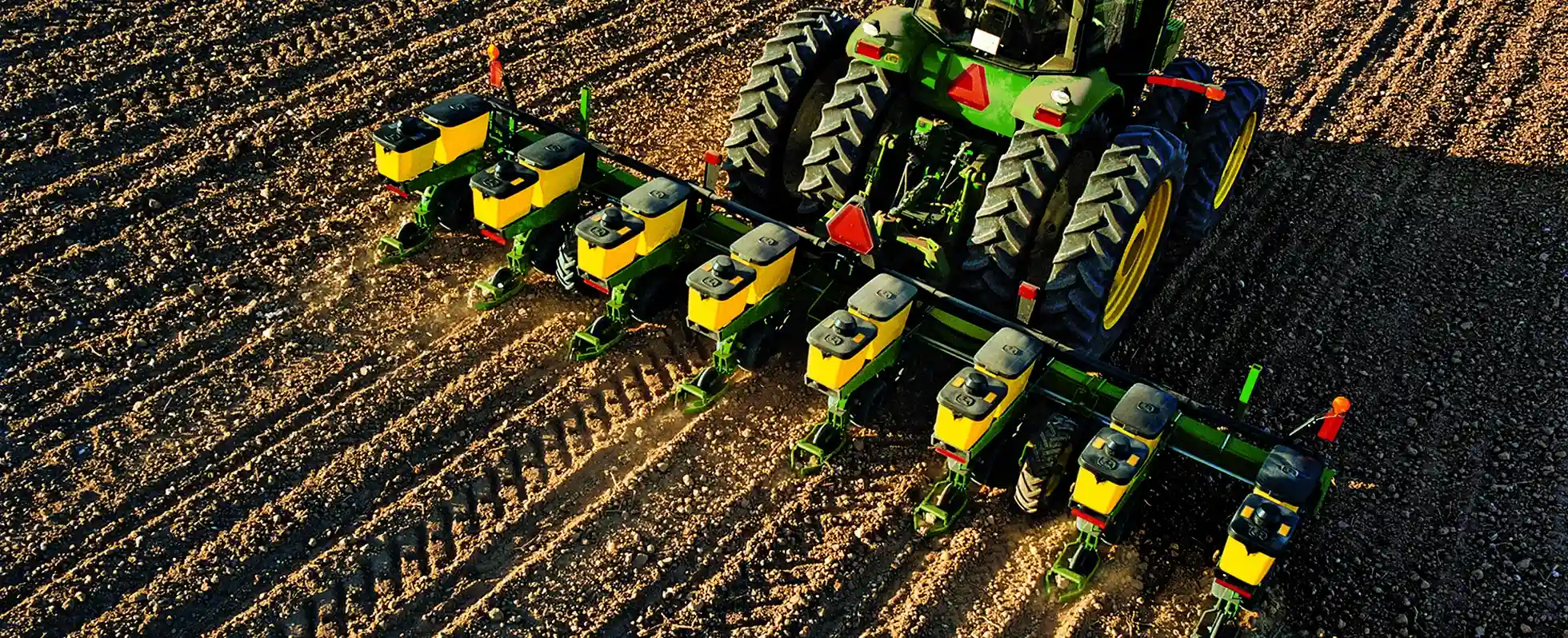
Onions are one of the most intense crops to work with when it comes to prepping for an upcoming planting season. In fact, planting quality of onions, including Walla Walla sweet onions, can be affected by timing and depth of seed planting, nutrient application rates, and nitrogen soil amounts. While no one can predict the future, implementing precision agriculture practices with connected machines can help growers of any size to see the relationship between the work we have completed and the harvest.
John Deere Operations Center, a complimentary farm management software system from John Deere, can monitor tillage dates and depths in real-time on multiple tractor planters - a handy tool during a busy planting season. For example, in 2021, I visited an onion grower who learned how to monitor equipment and use its data to forecast seed planting quality. I helped him remotely access a planter tractor’s display. Imagine our surprise when we saw that the planter said it was set up to plant corn -- not onions. This would have been quite a difference seeing that, in the Northwest region, corn seed plants vary from 1.5 to 2 inches deep, depending on the soil while onions need a depth of about ½ to 1 inch. If onions are planted at 1.5 inches or deeper, then their bulbs may not develop correctly due to reduced access to air and sunlight.
After several phone calls with the planter’s operator, we were able to manage the planter in real time and save a year's worth of crop failure. Other growers have made great strides as well. Tractor operators have found success with training from product specialists – like RDO Equipment Co. team members in Pasco, Washington – who know how to set up a planter’s connectivity to the John Deere Operations Center so every person on the farm can view and understand specific planting history without guessing.
As part of the planning tools available for pre-planting, growers can benefit from creating field maps in the John Deere Operations Center. This enables you to track the date of the last tillage and consult with your agronomist to recognize patterns and consider which tillage practices may work best for your farm during the spring. In fact, you might find that timing, moisture, and depth are variables that can either help eradicate or encourage a disease or fungal problem. In my experience, if there are problems in fields, it is helpful to see every aspect of the input process from a tractor. This way a solution can be proposed.
And if growers plan to enroll in GLOBAL Good Agriculture Practices, Natural Resources Conservation Service, or future soil carbon programs, then a previous year or more of growing season information about nutrient application management, variable rate application, and seed planting depth and timing could be required. In all cases, machines connected to a farm software management system, like John Deere Operations, can save hours of paperwork.
As equipment technology expands to help growers to practice precision agriculture, fickle crops, like sweet onions, can benefit from input measurement. During harvest, growers can use yield documentation to record real-time yield and can post-calibrate tonnage to fine-tune results. With connected machines, growers can take advantage of tools to measure, adjust and have more control over yields – even if the crop needs extra love and care.
Watch to learn about John Deere planter upgrades to improve a planter's performance.